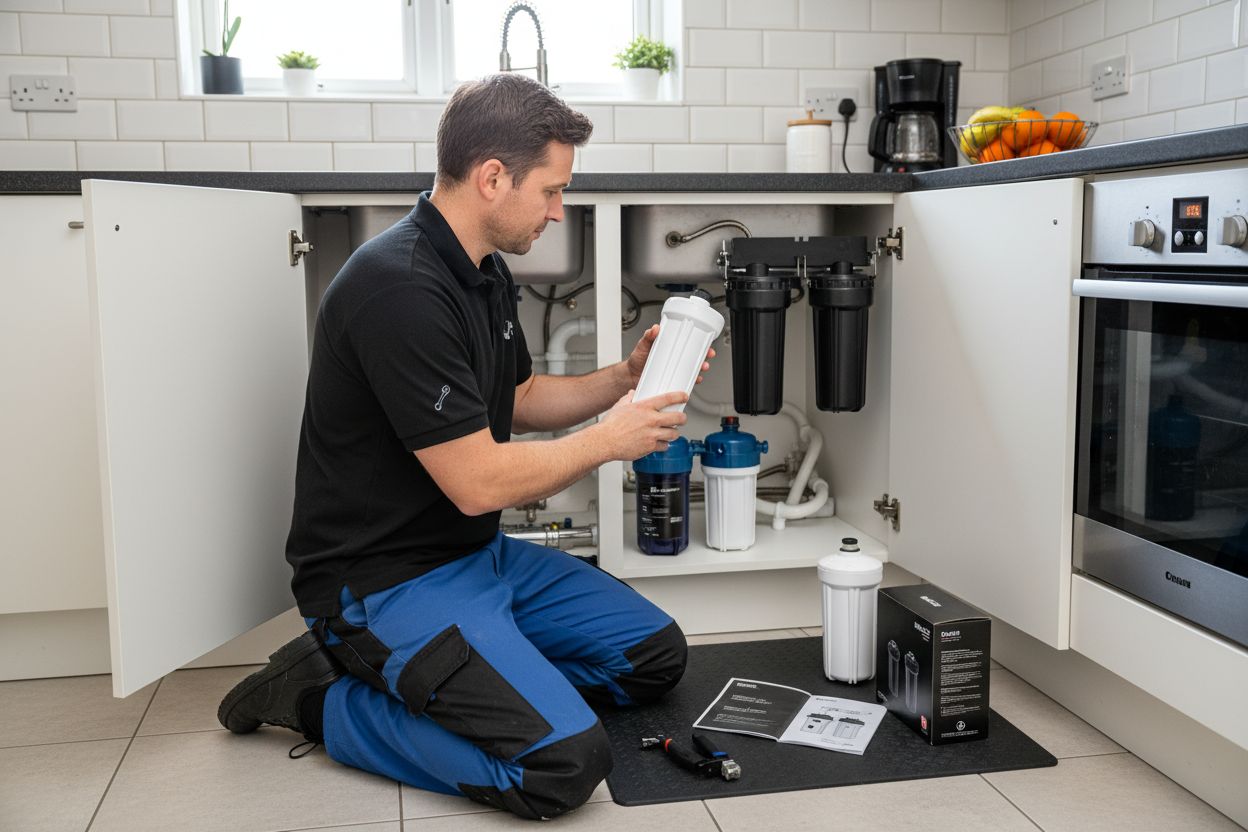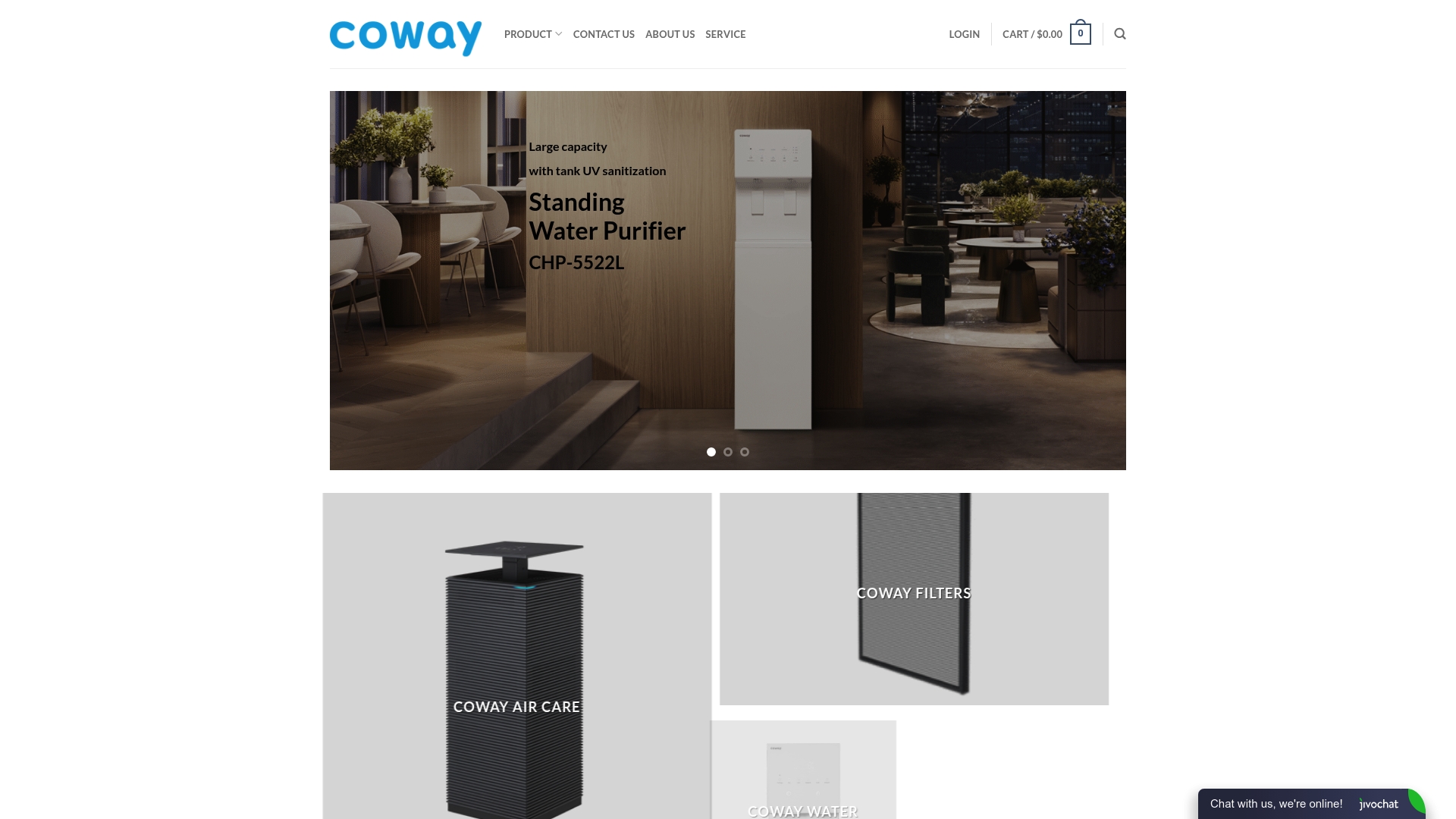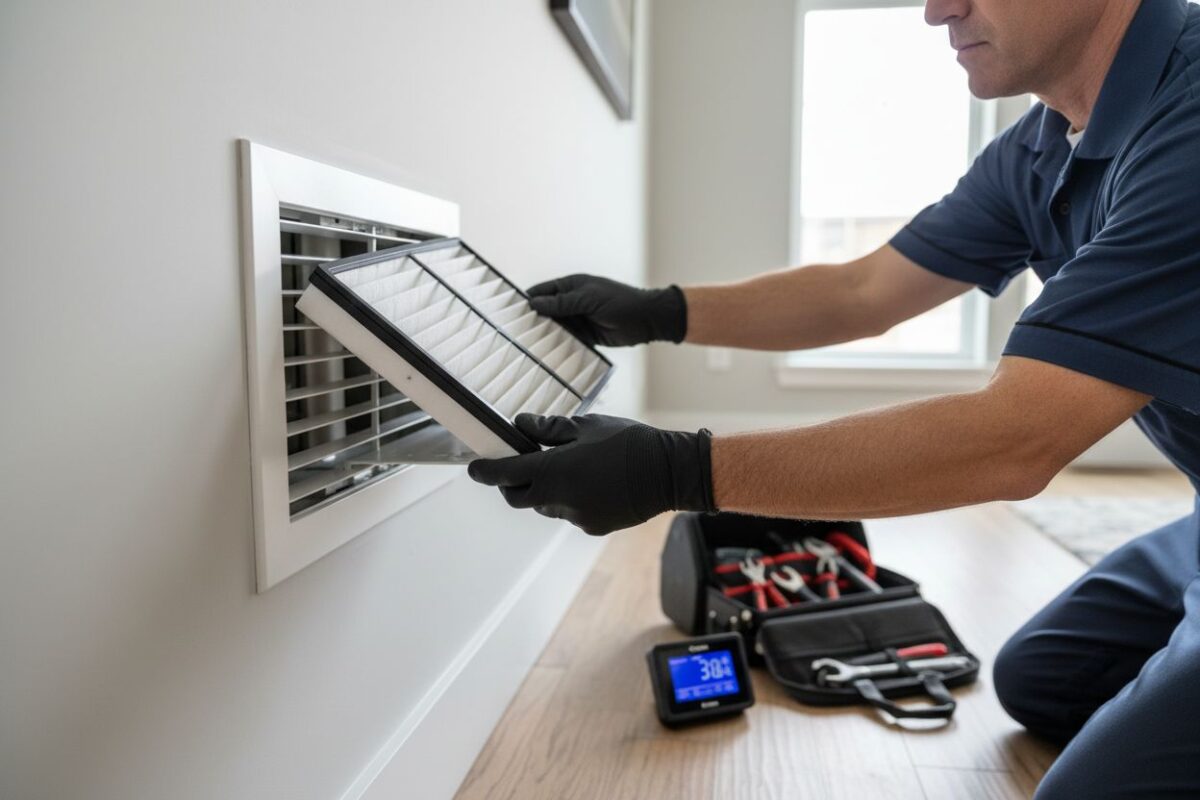Uncategorized
The Essential Guide to Regular Filter Replacement
Did you know that neglecting a home air filter can reduce your system’s efficiency and even threaten your family’s health? A clogged filter can cause higher energy bills and encourage dangerous microorganisms to grow. Small details like changing filters often get overlooked, but this simple routine can make a real difference. With the right approach, you can protect your loved ones and give your equipment a longer life without a lot of hassle.
Key Takeaways
| Point | Details |
|---|---|
| Regular Filter Replacement is Essential | Maintaining air and water filters is critical for health, efficiency, and the performance of home systems. Regular replacements prevent increased energy bills and health risks from contaminants. |
| Understanding Filter Types Aids Decision Making | Different filter types are designed for specific contaminants; selecting the right one is key to optimal protection for air and water quality. |
| Signs of Clogged Filters | Look for reduced airflow, dust accumulation, or strange odors as indicators that filters need replacement to avoid system damage and health issues. |
| Adhere to Maintenance Schedules | Establish a replacement schedule based on usage and environment; it helps maintain air and water quality while extending the lifespan of your HVAC system. |
Table of Contents
- Why Regular Filter Replacement Matters
- Common Types of Water and Air Filters
- How Filters Trap Contaminants Over Time
- Signs and Risks of Clogged or Old Filters
- Proper Filter Maintenance and Replacement Schedules
Why Regular Filter Replacement Matters
Your home’s air and water filtration systems are like silent guardians – protecting you from invisible threats lurking in your environment. But these guardians need regular maintenance to stay effective. Filter replacement isn’t just a technical chore; it’s a critical health investment.
According to Good Housekeeping, failing to change home air filters can lead to serious consequences:
- Reduced HVAC system efficiency
- Higher monthly energy bills
- Increased equipment repair frequency
- Dramatically decreased indoor air quality
Time Magazine provides an even more sobering perspective, highlighting that neglected filters can become breeding grounds for dangerous microorganisms. Bacteria, mold, and various contaminants can accumulate in unchanged filters, potentially triggering respiratory illnesses and compromising your family’s health.
Think of filter replacement like changing the oil in your car. A small, routine investment prevents massive, expensive problems down the road. By proactively maintaining your filtration systems, you’re not just protecting equipment – you’re safeguarding your family’s wellness and creating a healthier living environment. Read more about maintaining your home’s air quality.
Common Types of Water and Air Filters
Filters are like specialized security guards for your home’s air and water systems, each designed with unique capabilities to trap different types of contaminants. Understanding these filter varieties can help you make informed decisions about protecting your living environment.
In water filtration, ceramic filters stand out as a remarkable technology. According to Wikipedia, these filters leverage fine-pored ceramic material to effectively remove:
- Dirt and debris
- Bacteria
- Chemical contaminants (when treated with activated carbon)
While excellent for many applications, it’s important to note that ceramic filters typically cannot block viruses, making them best suited for specific water treatment scenarios.

Air filtration offers equally diverse options. Wikipedia highlights several types of compressed air filters used in industrial settings, including:
- Particulate filters
- Activated carbon filters
- Coalescing filters
- Cold coalescing filters
- Intake filters
Each filter type targets different contaminants like dust, oil, moisture, gases, and odors. Learn more about the nuanced world of water and air purification systems to better understand which filter might suit your specific needs.
Here’s a breakdown of common air and water filter types and their main targets:
| Filter Type | Primary Use | Targets Removed |
|---|---|---|
| Ceramic Water Filter | Water | Dirt Bacteria Chemical contaminants |
| Fiberglass Air Filter | Air | Dust Debris |
| Activated Carbon Filter | Air & Water | Odors Chemicals |
| Coalescing Air Filter | Air (Industrial) | Oil Moisture |
| HEPA Air Filter | Air | Fine particles Allergens |
| Washable Electrostatic | Air | Dust Pet Dander |
How Filters Trap Contaminants Over Time
Filters are like microscopic detention centers for unwanted particles, capturing contaminants through a complex dance of physics and material science. Filtration mechanisms work silently but powerfully to protect your water and air from potentially harmful substances.
According to groundbreaking research from ArXiv, filter media are sophisticated porous materials that trap contaminants as fluids pass through under pressure. This process isn’t static – it’s dynamic and evolving:
- Particles get trapped within the filter’s intricate network
- Pressure gradually changes filter permeability
- Continuous use slowly reduces the filter’s capacity to block contaminants
As contaminants accumulate, the filter’s effectiveness naturally declines. Think of it like a sponge gradually becoming saturated – eventually, it can’t absorb any more. The research highlights a critical insight: over time, compression reduces the filter’s permeability, which can eventually stop fluid flow entirely.
This natural degradation process underscores why regular filter replacement is crucial. By proactively changing filters, you ensure consistent protection and maintain optimal performance of your water and air purification systems. Discover more about maintaining your filter’s lifespan and keep your home’s environmental guardians working at peak efficiency.
Signs and Risks of Clogged or Old Filters
Filters are your home’s silent health guardians, but like any protective system, they wear down over time. Filter degradation isn’t just an inconvenience – it can become a serious health and safety concern for you and your family.
According to Better Homes & Gardens, there are several telltale signs that your filters are crying out for replacement:
- Noticeably reduced airflow
- Visible dust accumulation
- Increased allergy symptoms
- Musty or strange odors
- Unusual noises from vents
- Unexpectedly rising energy bills
A.E. Lott reveals even more alarming risks associated with neglected filters. Clogged filters aren’t just ineffective – they can become active threats. They can circulate dangerous microorganisms like mold and bacteria, potentially aggravating respiratory issues and creating unexpected fire risks through HVAC system overheating.
Think of a clogged filter like a blocked artery in your home’s respiratory system. The longer you wait, the more strain you put on your entire system. Regular maintenance isn’t just recommended – it’s essential for protecting your health, your equipment, and your wallet. Learn more about the critical importance of filter maintenance and keep your home’s air and water systems running smoothly.
Proper Filter Maintenance and Replacement Schedules
Maintaining your home’s filters isn’t a one-size-fits-all task. Filter lifespans vary dramatically based on the type of filter, your home’s environment, and usage patterns. Understanding these nuances can save you money and protect your health.
According to Seasonal Control HVAC, filter replacement frequency depends on multiple factors. Standard 1-inch fiberglass filters typically last about 30 days, while pleated filters can extend up to 90 days. However, homes with specific challenges require more frequent attention:
- Pet owners: Replace filters every 30–60 days
- Homes with allergy sufferers: More frequent replacements
- High-dust environments: Shorter filter lifecycles
The Furnace Outlet provides a comprehensive breakdown of replacement schedules:
- Fiberglass (1"): Every 30 days
- Pleated (1–2"): Every 60–90 days
- High-efficiency media (4–5"): Every 6 months
- HEPA air scrubbers: Every 6–12 months
- Washable (electrostatic): Rinse monthly, replace every 5 years
Consistent maintenance isn’t just about following a schedule – it’s about proactively protecting your home’s air quality and equipment efficiency. Explore our comprehensive purifier maintenance checklist to keep your systems running smoothly and your air pristine.
Breathe Easy with Hassle-Free Filter Maintenance
If you are worried about poor air or water quality due to overdue filter changes, you are not alone. As discussed in this guide, skipping regular filter replacement can compromise your family’s health, reduce system efficiency, and lead to surprising repair costs. The good news is you can take control with solutions that make filter care simple and effective. Our Uncategorized Archives – Coway Water Purifier section highlights how advanced Coway purifiers are built to address these exact issues, offering powerful filtration plus easy maintenance features for ultimate peace of mind.

Take the next step today. Visit https://cowayswaterpurifier.com to explore our full range of water and air purifiers with built-in reminders and reliable service options. Experience the difference that worry-free, science-based filtration can make for your home. Waiting can put your health at risk, so make your move now and create a cleaner, healthier living space with Coway.
Frequently Asked Questions
How often should I replace my air and water filters?
Replacing air filters depends on the type used: fiberglass filters should be replaced every 30 days, pleated filters every 60-90 days, and HEPA filters every 6-12 months. Water filters vary based on usage, so consult manufacturer guidelines for specific replacement intervals.
What are the signs that my filters need to be changed?
Common signs include reduced airflow, visible dust accumulation, increased allergy symptoms, musty odors, unusual noises from vents, and rising energy bills. If you notice any of these, it may be time to replace your filters.
What happens if I don’t replace my filters regularly?
Neglecting to replace filters can lead to reduced HVAC efficiency, increased energy bills, and poor indoor air quality. Over time, clogged filters can become breeding grounds for harmful microorganisms, exacerbating respiratory issues for you and your family.
What types of filters are best for removing different contaminants?
Ceramic filters are effective for removing dirt, bacteria, and certain chemicals from water. For air, options like HEPA filters are ideal for capturing fine particles and allergens, while activated carbon filters are better for odors and chemical contaminants.
Recommended
- 7 Essential Steps for Your Purifier Maintenance Checklist – Coway Water Purifier
- Understanding Why Change Purifier Filters Matters for Health – Coway Water Purifier
- Understanding Water Filter Lifespan: Key Insights Explained – Coway Water Purifier
- Understanding Why Regular Purifier Maintenance Matters – Coway Water Purifier

